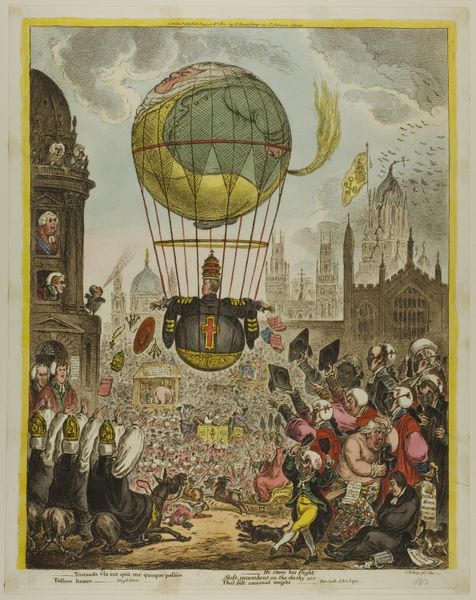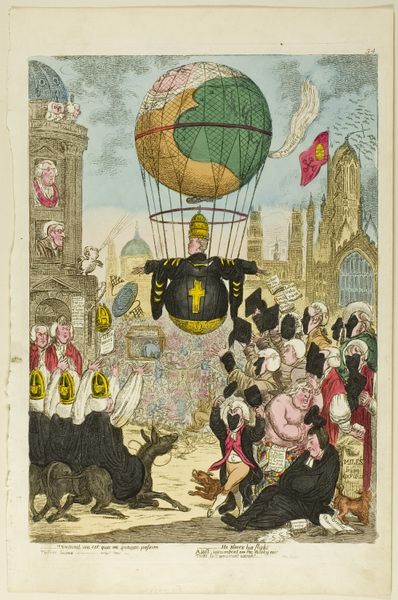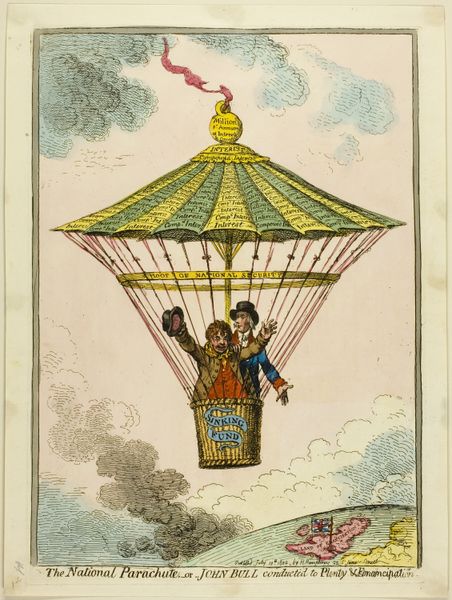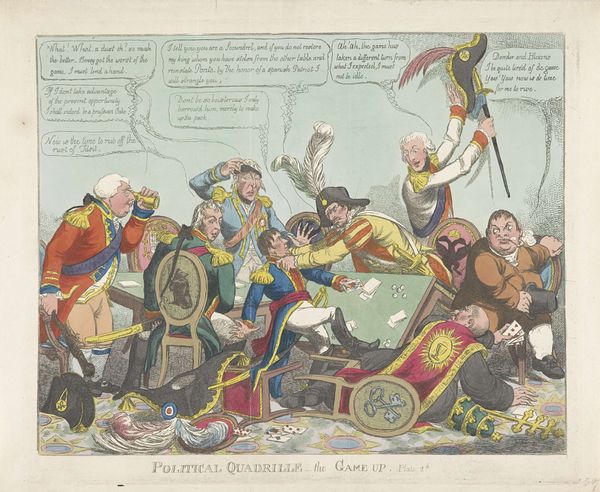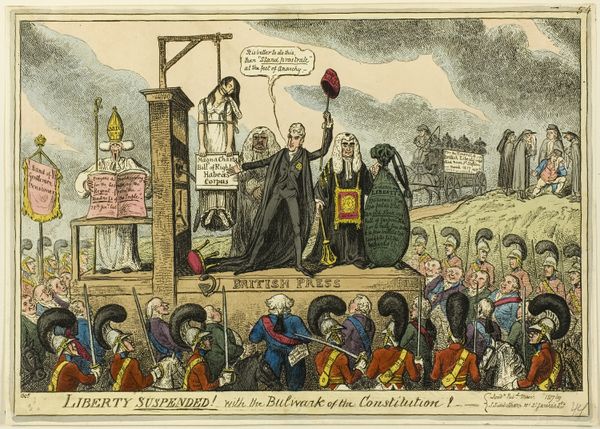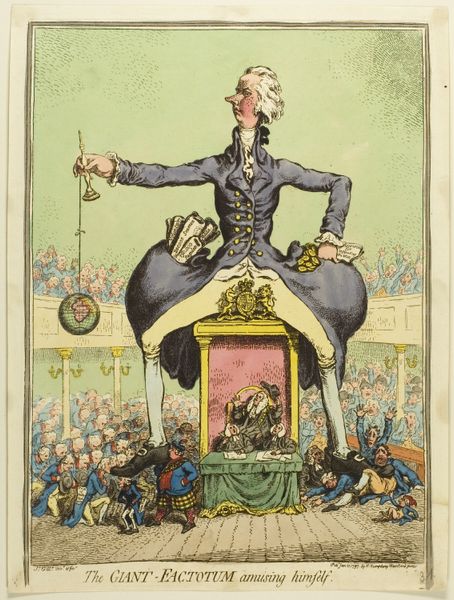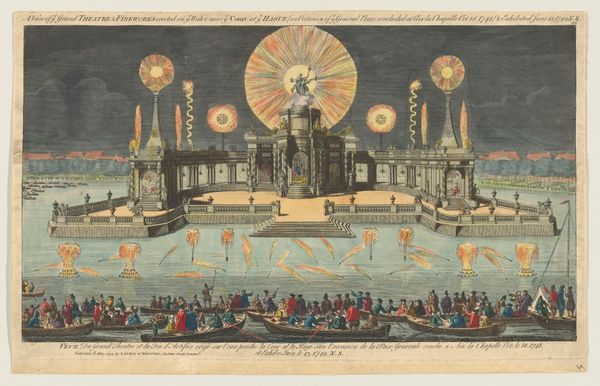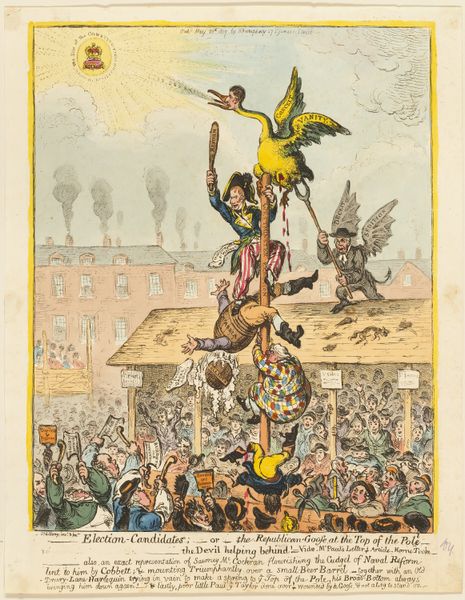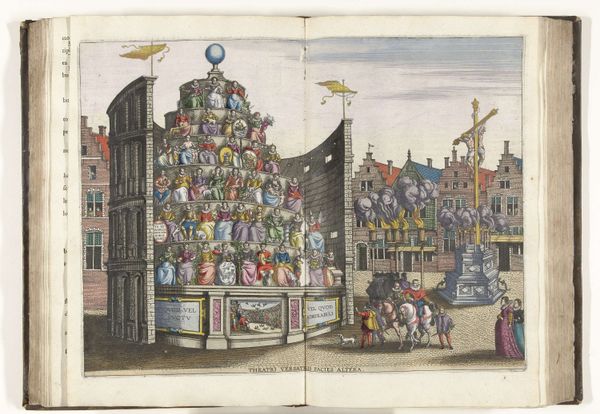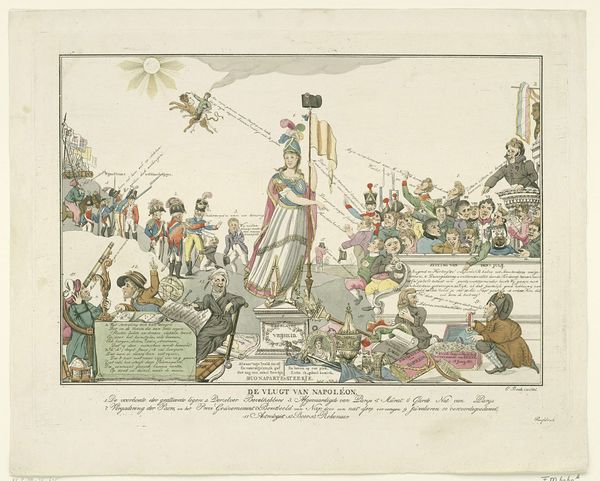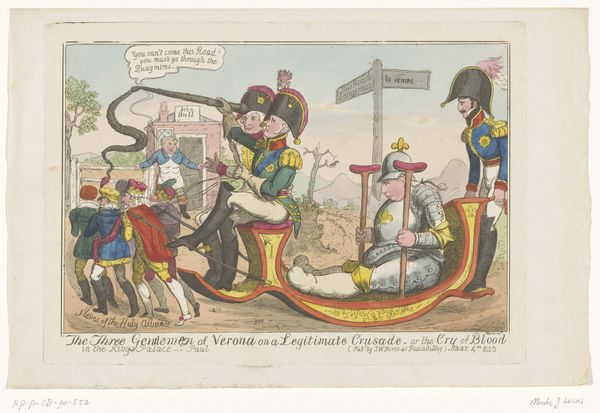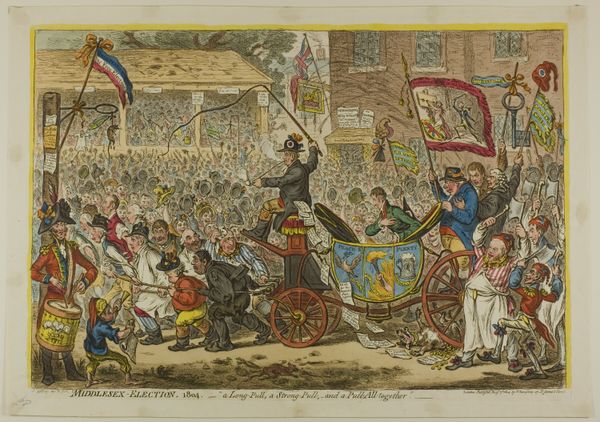
Tendanda via est qua me quoque possim tollere humo–Virgil, Geor: 1810
0:00
0:00
drawing, print, etching
#
drawing
#
narrative-art
# print
#
etching
#
caricature
#
figuration
#
romanticism
#
cityscape
#
history-painting
#
watercolor
Dimensions: sheet: 13 3/4 x 9 3/4 in. (34.9 x 24.8 cm)
Copyright: Public Domain
Editor: So, this etching by James Gillray, "Tendanda via est qua me quoque possim tollere humo – Virgil, Geor:", from 1810, shows a rather…chaotic scene. I'm immediately struck by how Gillray uses caricature to portray what seems like political upheaval. What’s your take on this incredibly busy print? Curator: Gillray’s work is deeply entrenched in the socio-political debates of his time. Here, the caricature isn't merely comical; it’s a weapon. Notice how the figure in the hot air balloon, adorned with papal symbols, dominates the cityscape. Gillray is commenting on the Catholic Emancipation debates that were raging in Britain. Editor: The balloon does grab your attention, but the crowd is really active too. Are the figures in the foreground meant to be recognizable individuals, or types? Curator: Gillray certainly used stereotypes and popular perceptions. Look at the reactions: some cheer, some recoil, others are indifferent. He’s capturing the divisions within British society, fueled by anxieties about religious power and national identity. Editor: I see. It’s like he’s staging a street play, with the print as the theater. The backdrop, London itself, becomes part of the drama. Curator: Precisely. How does the inclusion of recognizable London architecture inform your understanding of the work’s intent and reception? Think about who would have viewed this, and where. Editor: Makes you consider the role of printed images in shaping public opinion, I suppose. These weren’t just artworks; they were arguments, circulated widely. The level of detail alone seems aimed to get your attention at a newsstand. Curator: Absolutely. The commercial aspect is vital. Gillray wasn't just an artist; he was a savvy operator navigating the market of political ideas, a precursor to modern editorial cartoonists. Editor: It’s fascinating to see how art, history, and politics intertwine like this. The piece, although a small print, holds a magnifying glass to societal conflicts and cultural identities during Gillray’s moment. Curator: Yes. And understanding that context, makes what was once a piece of political propaganda transform into a vital visual document today.
Comments
No comments
Be the first to comment and join the conversation on the ultimate creative platform.
